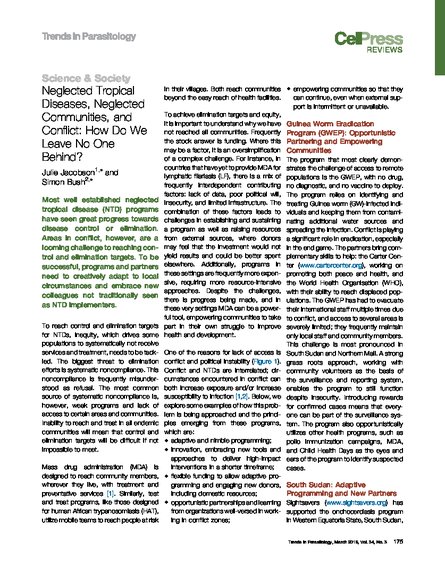
Most well established neglected tropical disease (NTD) programs have seen great progress towards disease control or elimination. Areas in conflict, however, are a looming challenge to reaching control and elimination targets. To be successful, programs and partners need to creatively adapt to local circumstances and embrace new colleagues not traditionally seen as NTD implementers.
To reach control and elimination targets for NTDs, inequity, which drives some populations to systematically not receive services and treatment, needs to be tackled. The biggest threat to elimination efforts is systematic noncompliance. This noncompliance is frequently misunderstood as refusal. The most common source of systematic noncompliance is, however, weak programs and lack of access to certain areas and communities. Inability to reach and treat in all endemic communities will mean that control and elimination targets will be difficult if not impossible to meet.
Mass drug administration (MDA) is designed to reach community members, wherever they live, with treatment and preventative services [1]. Similarly, test and treat programs, like those designed for human African trypanosomiasis (HAT), utilize mobile teams to reach people at risk in their villages. Both reach communities beyond the easy reach of health facilities.